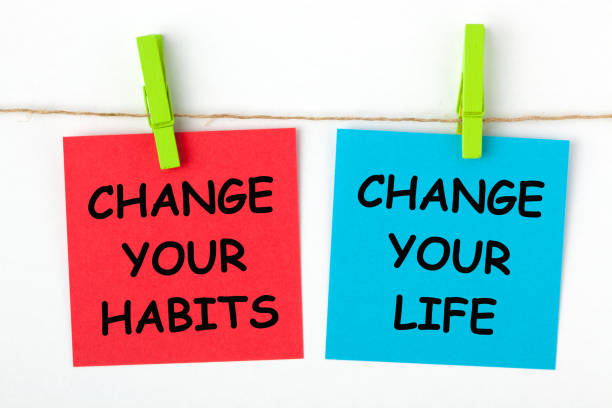Step 1: Identify what you want to change in your habits
In order not to fail in our attempt to change inadequate habits , it is important to understand how they work:
Identifies a signal or that which triggers the habit: e.g. watching TV
A routine, which is what we do in the habit: EX. Snacking between meals, fried foods, etc.
Reward, which is that for which our brain knows that the habit is worth doing: e.g. eating sweets or snacks. etc.
When you start something new it is normal that you don’t know where to start.
Generally there are things you can do, things you want to do, and things you have to do. It is important to start at that point: at the things you have to do.
“Take a look at the world around you and change what you don’t like.”
Start by recognizing what habits are hurting you so you can begin to change.
The best way to realize which habits are harmful and are the ones you want to change, is to write them down on paper (or digital), (the test I shared with you in the last post can help you identify them https://coachingtheworld.healthcare/time-to-identify-inappropriate-habits/).
Writing them down is a way for you not to forget them and also to visualize them physically out of your head.
Take a few days (I recommend a week) to write them down. The objective of the list is to make a global analysis. (Food, physical activity, stress, self-image, etc).
Surely you have more than two habits you want to change, and you have a long list.
The problem with long lists is that they are NEVER DONE, so divide them into small lists of 5 things maximum for each list, and then write them as resolutions in the present tense: for example: I drink very little water for: today I am going to drink more water or I don’t exercise—- for : today I start exercising
The list you just made includes all those habits you want to change, so they are now GOALS.
Well, this is the first of 6 steps that we will be developing for you to start eliminating those harmful habits that affect your health and difficulty achieving your goal
Step 2: Make your goals ULTRA-SPECIFIC
Up to this point, we have a short list of resolutions (goals). Now, take just one goal from your list that you want to start with.
Try to see that goal as a path in which to get there requires short, achievable goals; that is, turn each step into a goal.
Why make many goals instead of one big one?
Because it is much easier to achieve a small goal than a big one. In fact, a well-planned goal is half the way forward.
How can I divide the goal?
Very easy, make your goal ultra-specific.
For example: if your goal is to DRINK MORE WATER or to START PHYSICAL ACTIVITY These are excellent goals but they ARE NOT SPECIFIC, we need to go even deeper:
- “Every two hours I drink a glass of “
- “Every day I wake up 15 minutes earlier to go for a 10-minute “
These goals are ULTRA-SPECIFIC and the best part is that they are ACHIEVABLE.
It’s up to you to break the list of habits you made in the previous step into ULTRA-SPECIFIC smaller goals. Make your goals easy.
If you don’t know how, these questions can help you:
- What specific and simple part can I start doing right now?
- Which action would be easier for me to start with?
- At what time of day (hour) will I be performing this action?
In this way, in addition to making your goal more attainable, you are providing a proposed solution to achieve habit change.
I hope you practice it…!
Step 3: Create an action plan
Knowledge has no value if you do not put it into practice. Up to this point we have: ultra-specific goals
If you set these ultra-specific goals, they are already proposed solutions to your problem. But that’s not enough. Now we have to create a plan to achieve the action we set out to take.
For example:
- Goal: “Every 2 hours I drink a glass of water”.
- Action plan: “I will have a bottle within reach to drink water”.
- Goal: “Every day I wake up 20 minutes earlier to go for a 15-minute run”.
- Action plan: “I prepare my sports clothes the night before to go for a 15-minute run in the morning”.
- Goal: “I will avoid drinking juice with meals”.
- Action plan: I do not buy fruits to prepare smoothies, I include fruits to eat in And so on for all your ultra-specific goals.
If you notice, in order to design the action plan we only need CREATIVITY, many times we have a lot of imagination to make excuses, let’s be equally to achieve the goal.
I recommend that you start with a single action plan, for a single habit, and then increase the intensity or number of habits. .
I can’t change your life, and no one can do it for you, only YOU have the power, but we can help you design a plan of action for you to succeed.https://www.coachingtheworld.academy/contact
Step 4: Choose a reminder
In your daily life you are already doing many habits (good or bad), the point is that this action is preceded by a reminder, which can be an image, a sound, an object, etc.
The reminder is essential to create new habits, if you have an effective reminder you will be able to establish a new habit in your routine more easily, because there will be no way to forget it. This will help you to repeat an action that will become a new but healthy habit. The more times you repeat it, the more you will get used to it.
How do I choose a reminder for my ultra-specific goals?
Reminders can be actions that you are already doing out of habit, or anything else that visually reminds you to carry out your action plan.
Do you remember the examples above?
- Goal : “Every four hours I drink a glass of water”.
- Action plan : “I will have a bottle within reach for a glass of water”.
- Reminder: “I will set an alarm on my cell phone every four hours”.
- Goal: “Every day I wake up 20 minutes earlier to go for a 15-minute run”.
- Action plan: “I prepare the night before my sports clothes for a 15-minute run in the morning”.
- Reminder: “I leave my things ready at the bedroom door so I can’t leave without seeing
them” or I leave them ready on the car seat, or I ask someone else to remind me to set the alarm, or to get off the bus a few blocks earlier.
- Goal: “avoid drinking juice with meals”.
- Action plan: “I buy fruits to eat in portions and avoid buying those that are to be
- Reminder: “I prepare the shopping list the day before” or “I put a note on the fridge or on the kitchen wall reminding me to drink water with meals”.
The main objective of this step is to create an EFFECTIVE reminder so that you can accomplish the action and reach the goal more easily.
Step 5. Create an engine for the new habit
LET’S REMEMBER ………until this step:
- You have already identified the habit(s) that you needed to give up because they were hurting
- That objective, you broke it down into “ultra-specific” achievable short
- You created an action plan to fulfill them
- You support yourself with a reminder that allows you to repeat the new healthy habit over and over
Today, the fifth step to follow is to create the engine that drives this habit: “your greatest inner desire”.
Science has shown that when the motivation is intrinsic, that is, when the motivation comes from within and its reward (that for which the mind knows that the habit is worth keeping) is associated with personal growth and the pleasure felt when performing the habit, the habit will be more solid than when the reward is external, such as money, flattery, etc ,
When you feel yourself faint in the attempt ” remember the engine that drives you to continue “YOUR BIGGEST DESIRE”.
Remembering it will help you to repeat that new habit until you do it automatically because doing it will give you a sense of satisfaction and it is your reward.
Step 6 : Check, adjust and celebrate your progress
At this point you’ve already been making achievable day-to-day goals, it’s time to review how you’re doing.
Review each ultra-specific goal you set in the action plan:
- Have you done it on the days and at the times you set out to do it?
- How many times did you fail
- Review the reasons for your failure
- How did you feel the day you did not do it?
- How did you feel when you met the day’s goals?
Identifying these aspects will allow you to verify if your action plan is leading you to achieve the daily objective you want to accomplish or if you can continue with it because it works for you and makes you feel good.
If you still accomplished it but the way you do it causes you stress or overloads you, rethink the way you do it but never abandon the goal.
For example: if getting up early to walk every day makes you feel more tired because you
feel you do not get enough sleep, or walking is not to your liking, then set aside an hour during the day to go to the gym or practice your favorite sport.
The only objective is not to break the chain of successes; that is, to accumulate as many days as possible to achieve the goal, so that it will be quicker to incorporate the habit.
Be honest with yourself, because once you identify all the obstacles that prevent you from taking action, it will be much easier to overcome them.
When you succeed in performing your daily action correctly, immediately afterwards dedicate a round of applause, a smile or a few words to yourself.
Although it may not seem like it is important, you need a positive reward to do it again. This builds self-confidence and keeps you motivated to stay consistent.


Qué buena info. Gracias coaching the world